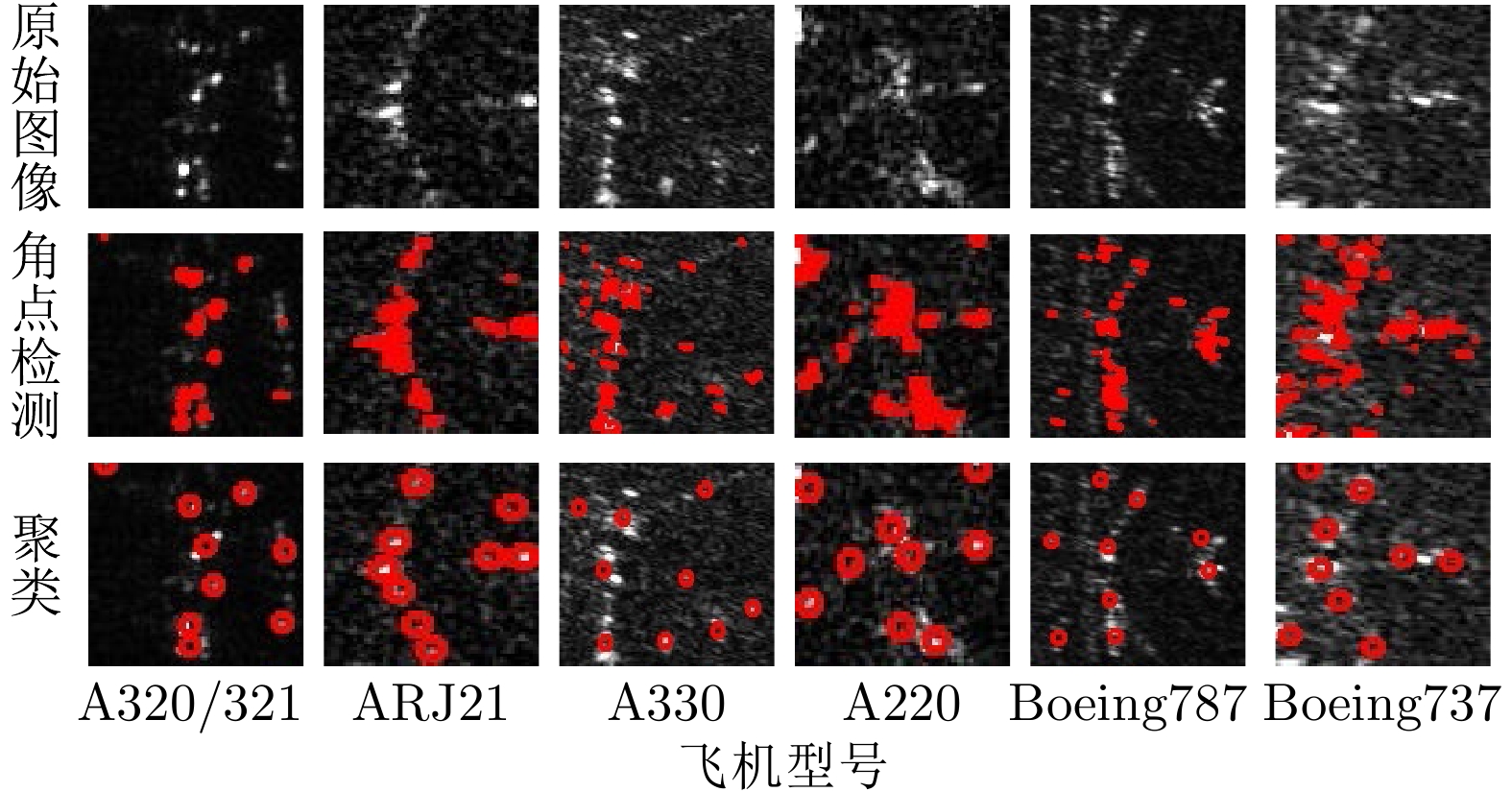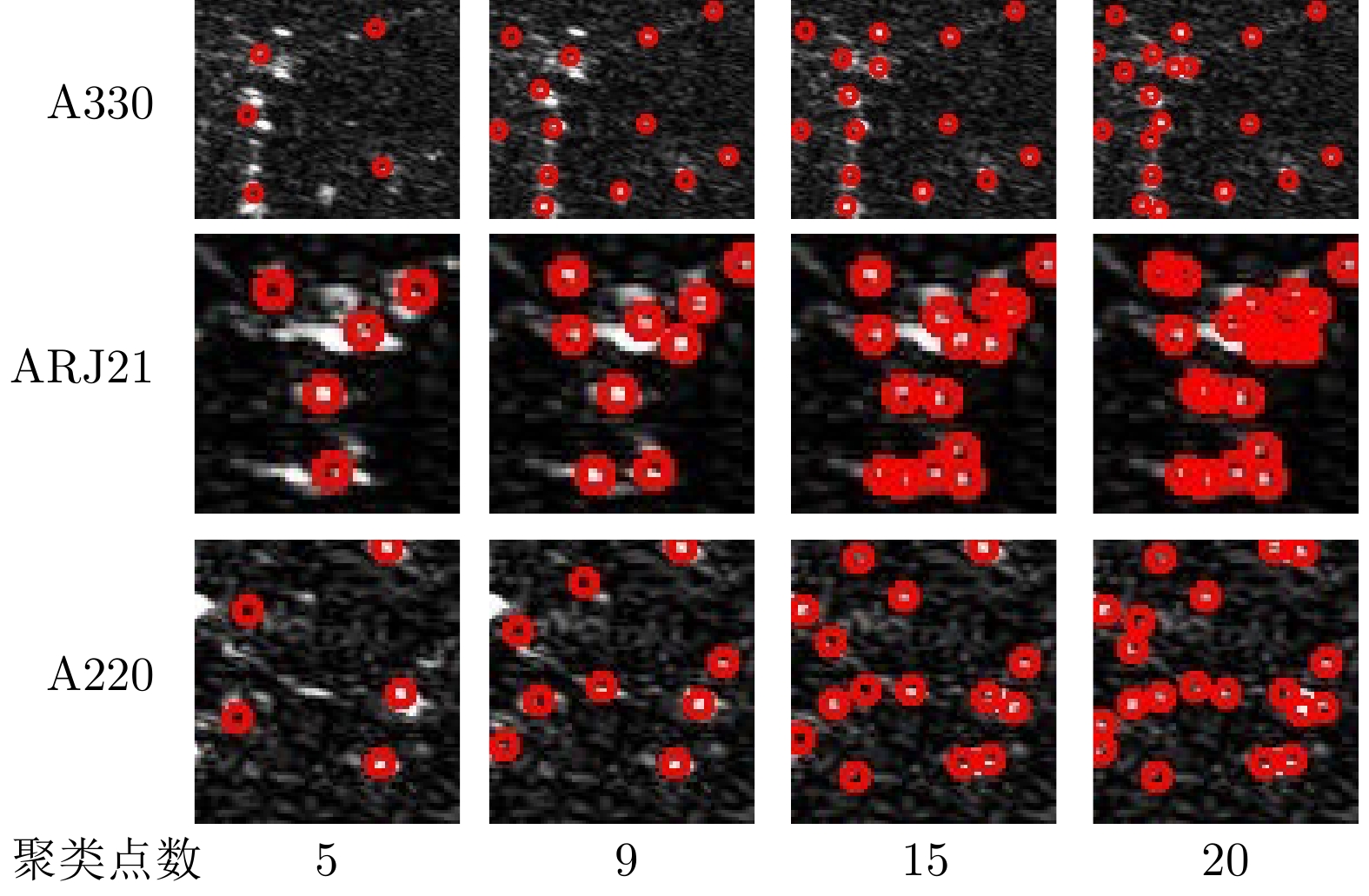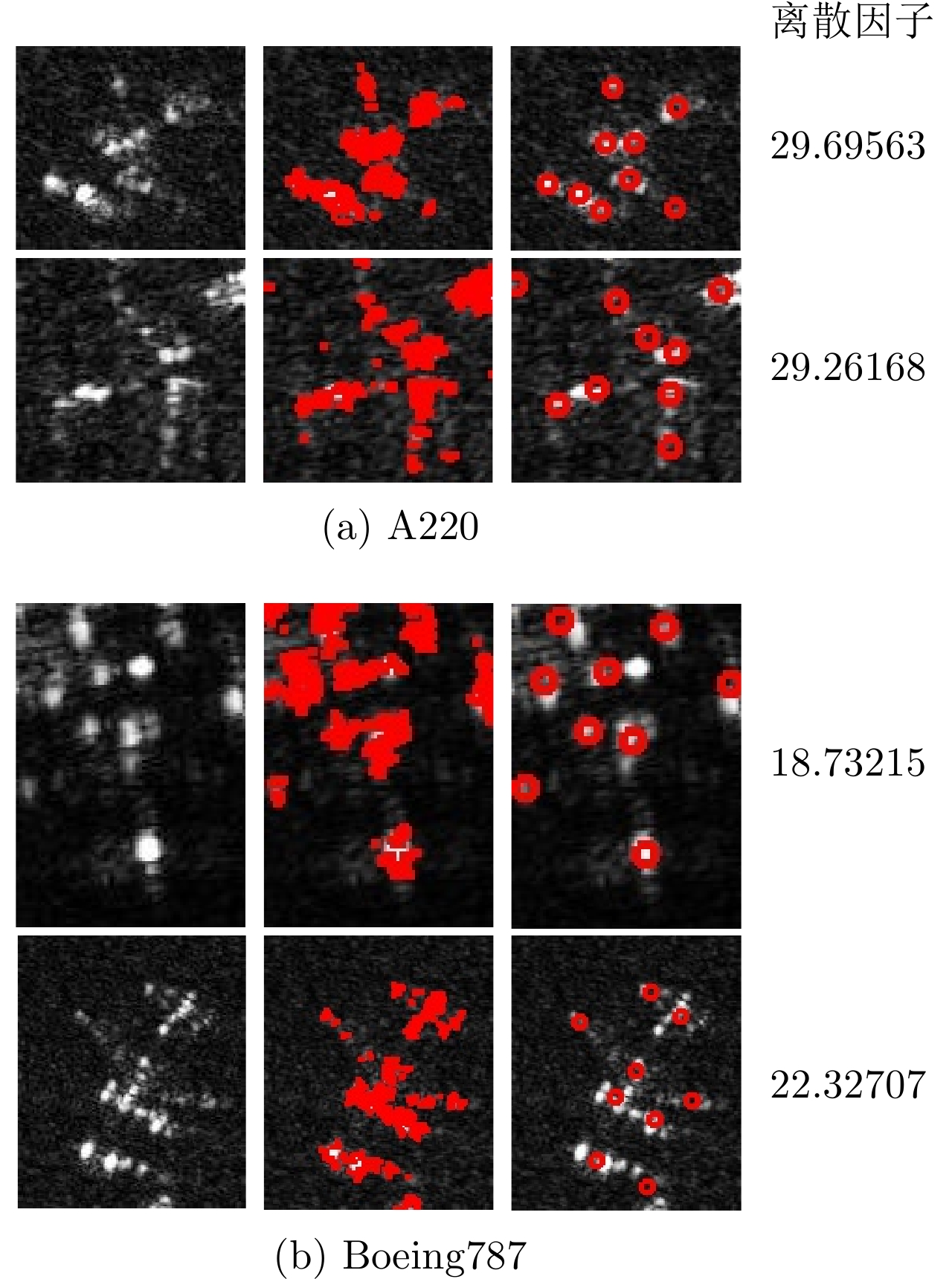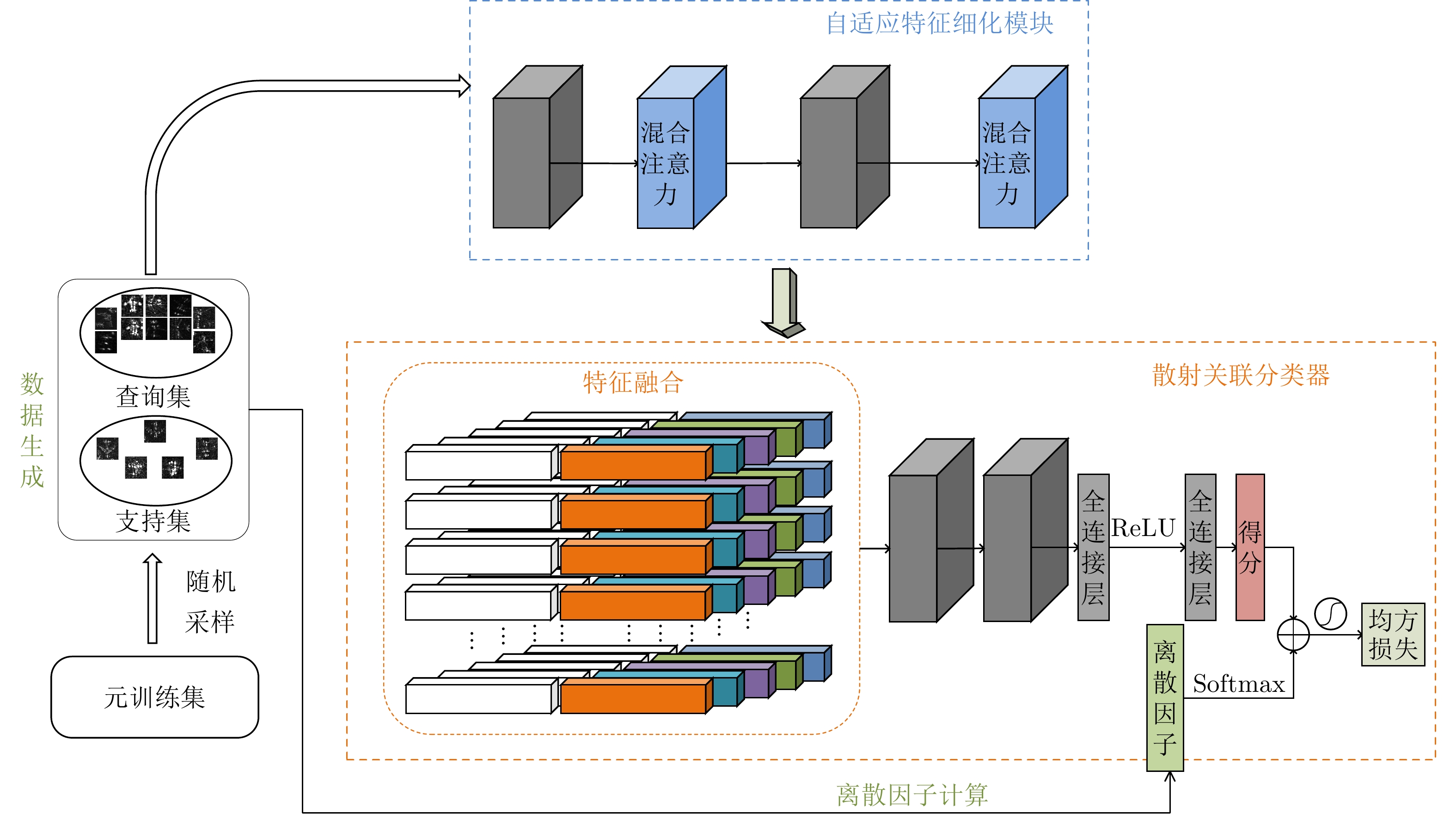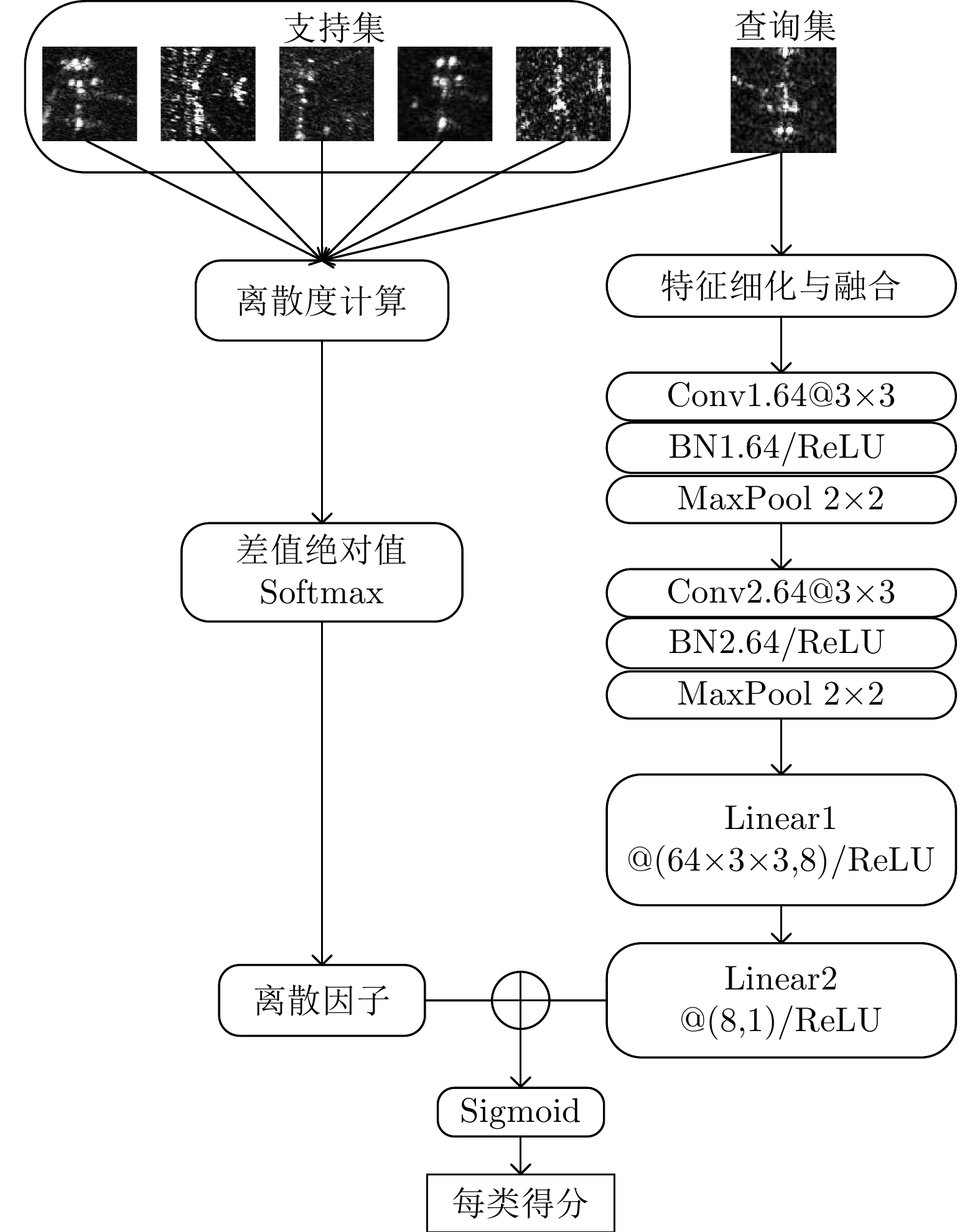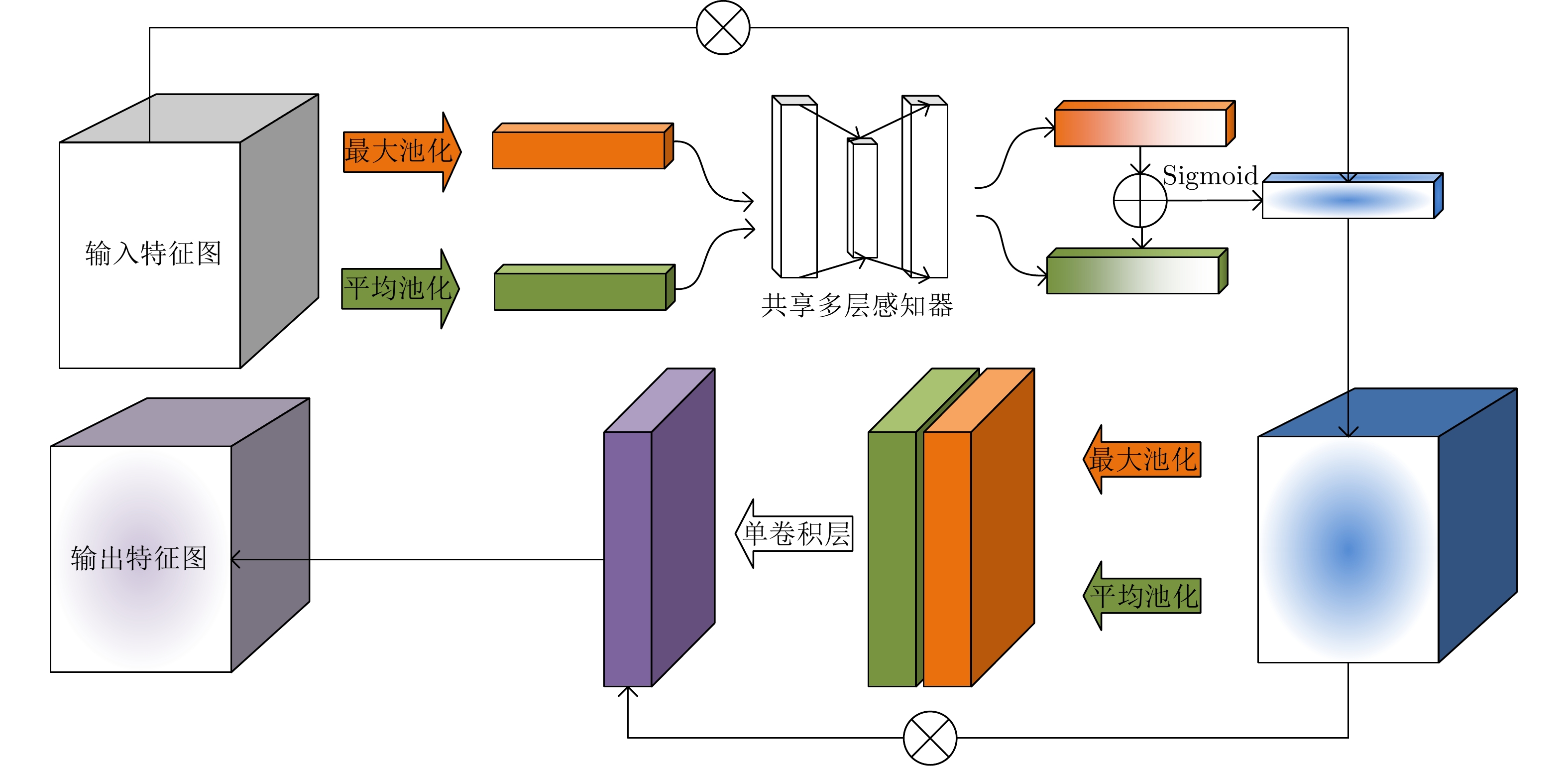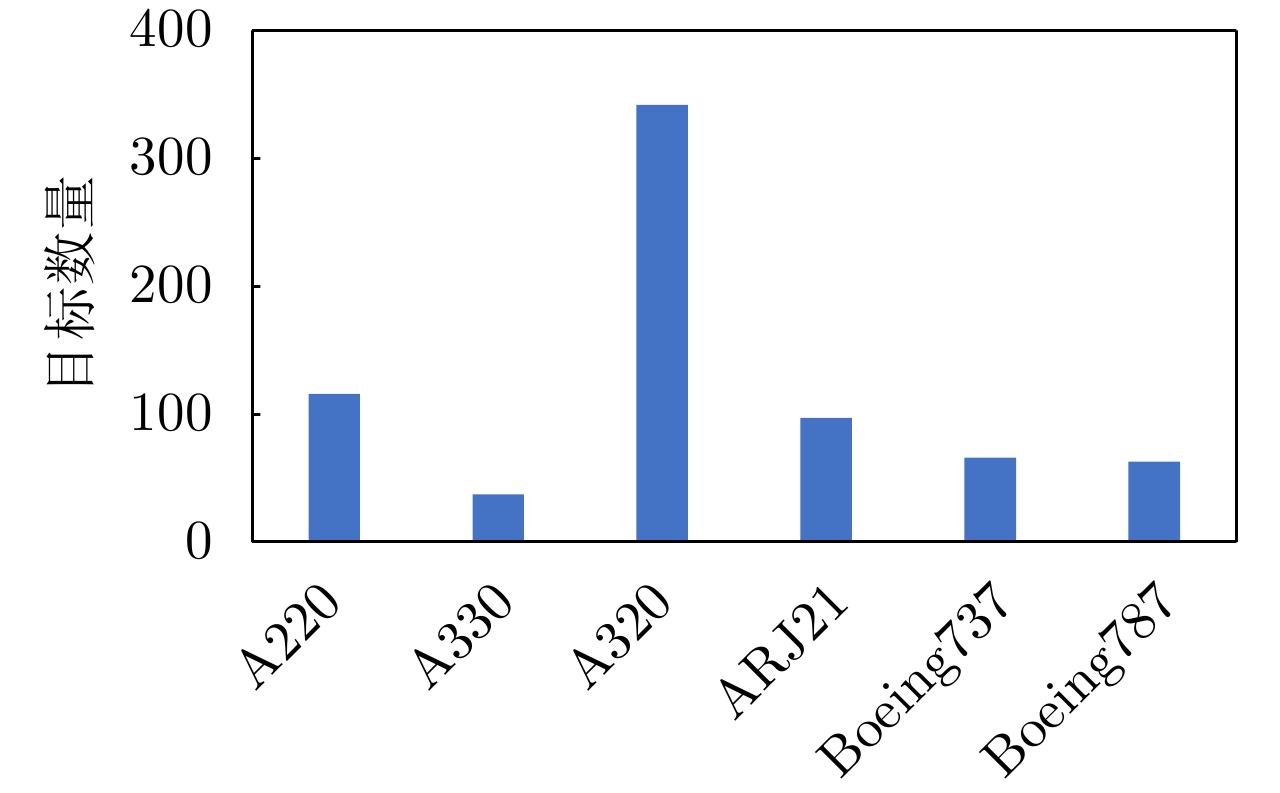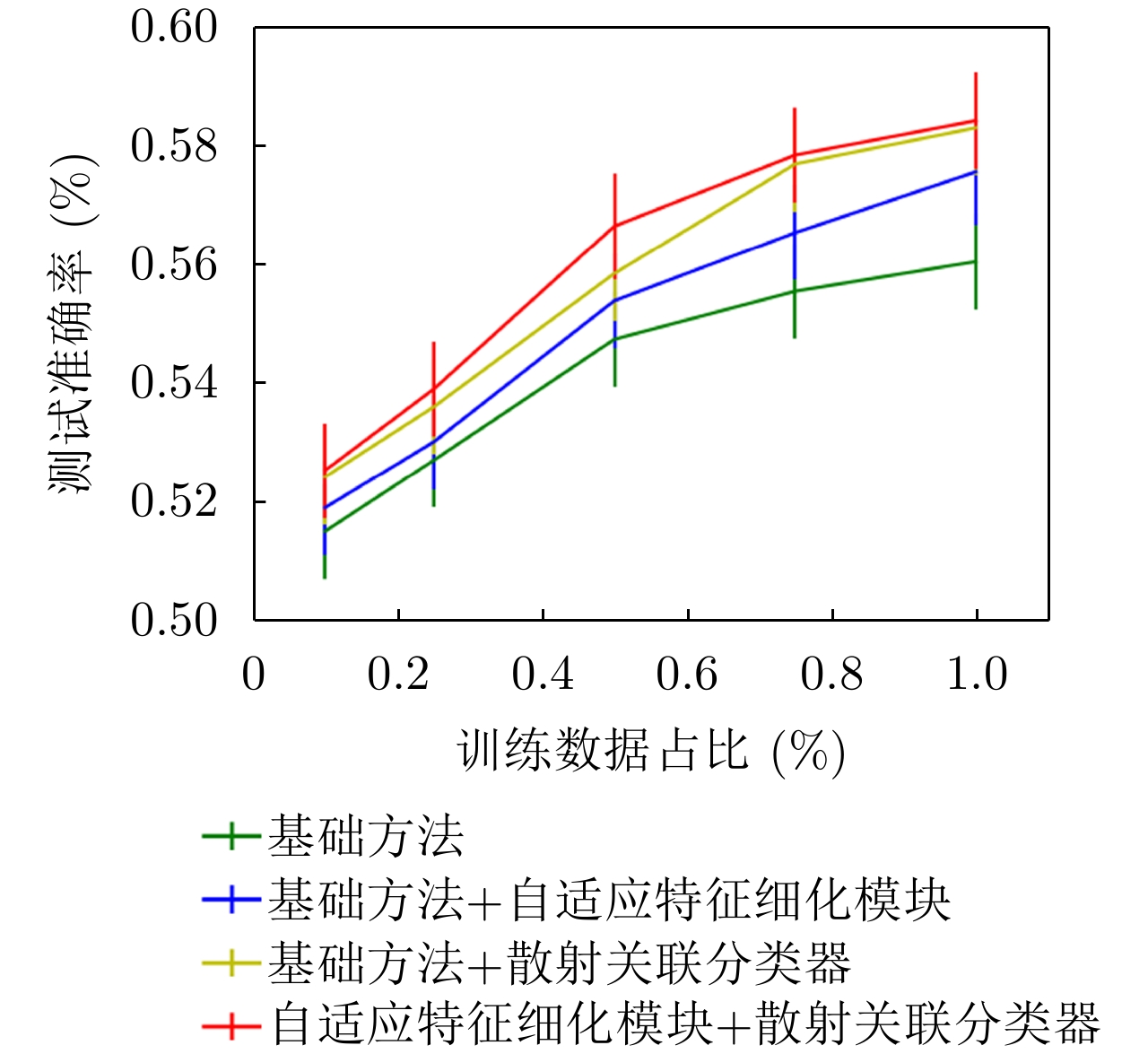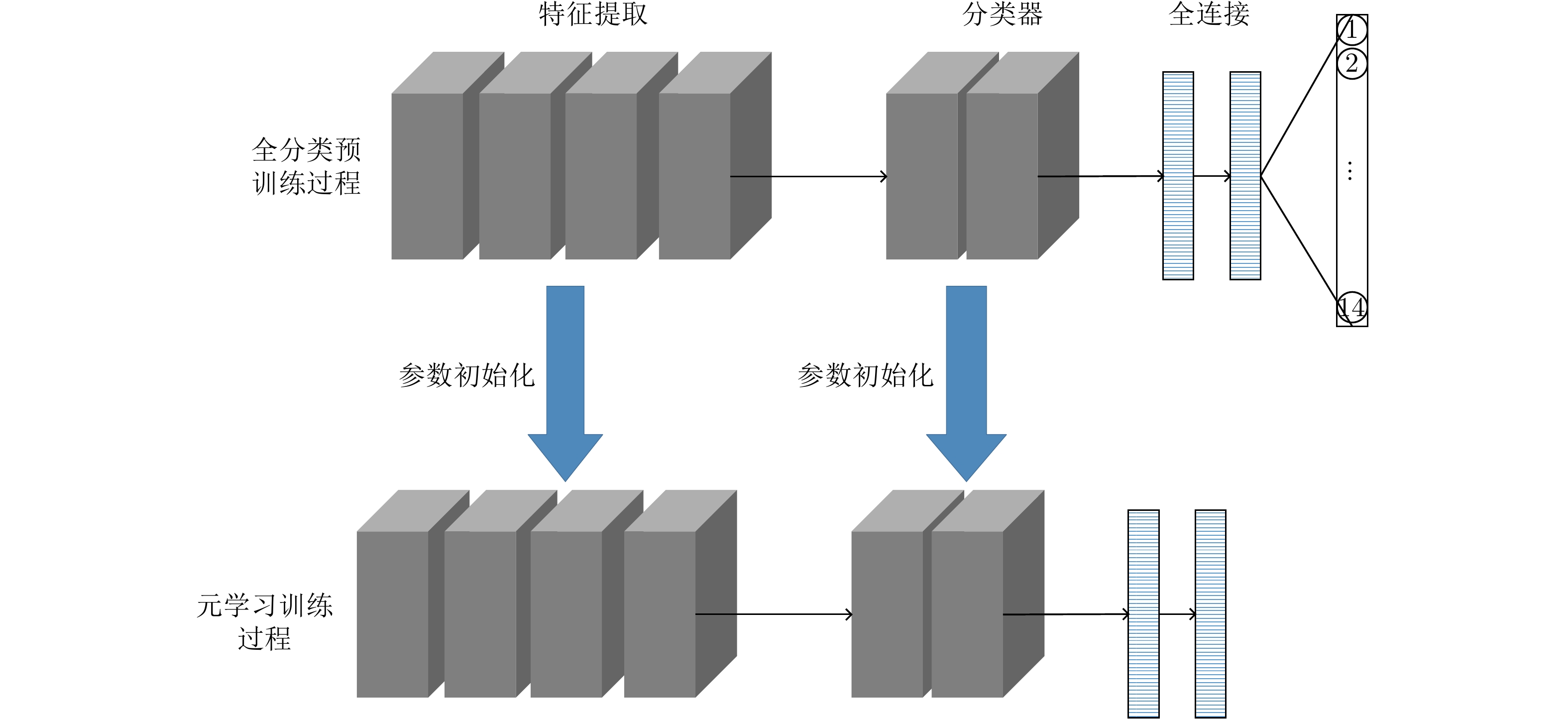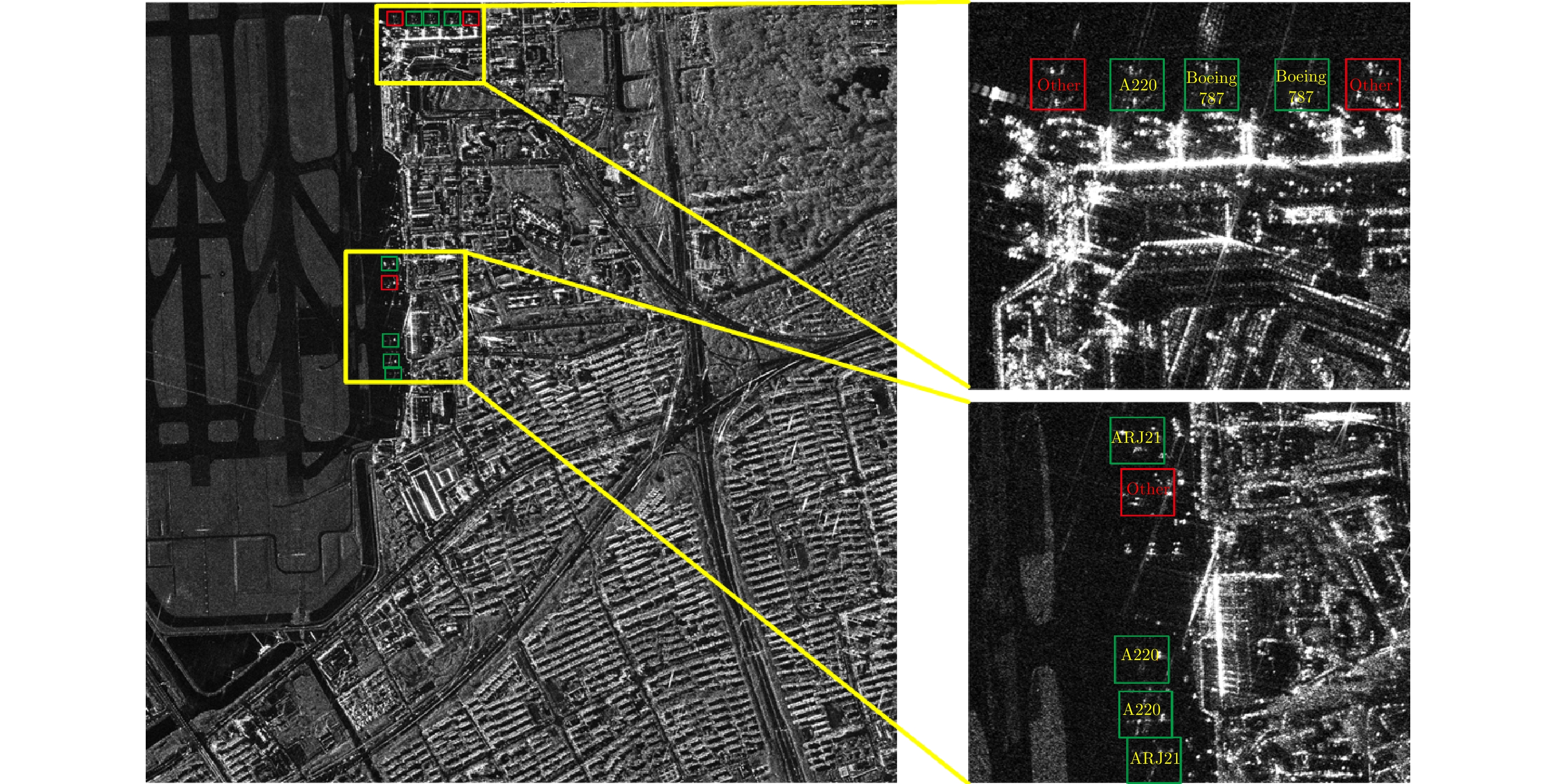| [1] |
DONG Ganggang and KUANG Gangyao. Classification on the monogenic scale space: Application to target recognition in SAR image[J]. IEEE Transactions on Image Processing, 2015, 24(8): 2527–2539. doi: 10.1109/TIP.2015.2421440 |
| [2] |
NOVAK L M, OWIRKA G L, and BROWER W S. Performance of 10-and 20-target MSE classifiers[J]. IEEE Transactions on Aerospace and Electronic Systems, 2000, 36(4): 1279–1289. doi: 10.1109/7.892675 |
| [3] |
WAGNER S A. SAR ATR by a combination of convolutional neural network and support vector machines[J]. IEEE Transactions on Aerospace and Electronic Systems, 2016, 52(6): 2861–2872. doi: 10.1109/TAES.2016.160061 |
| [4] |
康健, 王智睿, 祝若鑫, 等. 基于监督对比学习正则化的高分辨率SAR图像建筑物提取方法[J]. 雷达学报, 2022, 11(1): 157–167. doi: 10.12000/JR21124KANG Jian, WANG Zhirui, ZHU Ruoxin, et al. Supervised contrastive learning regularized high-resolution synthetic aperture radar building footprint generation[J]. Journal of Radars, 2022, 11(1): 157–167. doi: 10.12000/JR21124 |
| [5] |
HE Chu, TU Mingxia, XIONG Dehui, et al. Adaptive component selection-based discriminative model for object detection in high-resolution SAR imagery[J]. ISPRS International Journal of Geo-Information, 2018, 7(2): 72. doi: 10.3390/ijgi7020072 |
| [6] |
KANG Yuzhuo, WANG Zhirui, FU Jiamei, et al. SFR-Net: Scattering feature relation network for aircraft detection in complex SAR images[J]. IEEE Transactions on Geoscience and Remote Sensing, 2021, 60: 5218317. doi: 10.1109/TGRS.2021.3130899 |
| [7] |
赵鹏菲, 黄丽佳. 一种基于EfficientNet与BiGRU的多角度SAR图像目标识别方法[J]. 雷达学报, 2021, 10(6): 895–904. doi: 10.12000/JR20133ZHAO Pengfei and HUANG Lijia. Target recognition method for multi-aspect synthetic aperture radar images based on EfficientNet and BiGRU[J]. Journal of Radars, 2021, 10(6): 895–904. doi: 10.12000/JR20133 |
| [8] |
ZHANG Jinsong, XING Mengdao, and XIE Yiyuan. FEC: A feature fusion framework for SAR target recognition based on electromagnetic scattering features and deep CNN features[J]. IEEE Transactions on Geoscience and Remote Sensing, 2021, 59(3): 2174–2187. doi: 10.1109/TGRS.2020.3003264 |
| [9] |
HUANG Zhongling, DATCU M, PAN Zongxu, et al. Deep SAR-Net: Learning objects from signals[J]. ISPRS Journal of Photogrammetry and Remote Sensing, 2020, 161: 179–193. doi: 10.1016/j.isprsjprs.2020.01.016 |
| [10] |
YANG Yue, ZHANG Zhuo, MAO Wei, et al. Radar target recognition based on few-shot learning[J]. Multimedia Systems, 2021: 3. doi: 10.1007/s00530-021-00832-3 |
| [11] |
CAO Changjie, CUI Zongyong, CAO Zongjie, et al. An integrated counterfactual sample generation and filtering approach for SAR automatic target recognition with a small sample set[J]. Remote Sensing, 2021, 13(19): 3864. doi: 10.3390/rs13193864 |
| [12] |
GUO Jiayi, LEI Bin, DING Chibiao, et al. Synthetic aperture radar image synthesis by using generative adversarial nets[J]. IEEE Geoscience and Remote Sensing Letters, 2017, 14(7): 1111–1115. doi: 10.1109/LGRS.2017.2699196 |
| [13] |
RADFORD A, METZ L, and CHINTALA S. Unsupervised representation learning with deep convolutional generative adversarial networks[J]. arXiv preprint arXiv: 1511. 06434v1, 2015.
|
| [14] |
CUI Zongyong, ZHANG Mingrui, CAO Zongjie, et al. Image data augmentation for SAR sensor via generative adversarial nets[J]. IEEE Access, 2019, 7: 42255–42268. doi: 10.1109/ACCESS.2019.2907728 |
| [15] |
KUSK A, ABULAITIJIANG A, and DALL J. Synthetic SAR image generation using sensor, Terrain and target models[C]. EUSAR 2016: 11th European Conference on Synthetic Aperture Radar, Hamburg, Germany, 2016: 1–5.
|
| [16] |
LIN Zhao, JI Kefeng, KANG Miao, et al. Deep convolutional highway unit network for SAR target classification with limited labeled training data[J]. IEEE Geoscience and Remote Sensing Letters, 2017, 14(7): 1091–1095. doi: 10.1109/LGRS.2017.2698213 |
| [17] |
喻玲娟, 王亚东, 谢晓春, 等. 基于FCNN和ICAE的SAR图像目标识别方法[J]. 雷达学报, 2018, 7(5): 622–631. doi: 10.12000/JR18066YU Lingjuan, WANG Yadong, XIE Xiaochun, et al. SAR ATR based on FCNN and ICAE[J]. Journal of Radars, 2018, 7(5): 622–631. doi: 10.12000/JR18066 |
| [18] |
PAN Zongxu, BAO Xianjie, ZHANG Yueting, et al. Siamese network based metric learning for SAR target classification[C]. IGARSS 2019–2019 IEEE International Geoscience and Remote Sensing Symposium, Yokohama, Japan, 2019: 1342–1345.
|
| [19] |
MA Yu, LIANG Yan, ZHANG Wanying, et al. SAR target recognition based on transfer learning and data augmentation with LSGANs[C]. 2019 Chinese Automation Congress (CAC), Hangzhou, China, 2019: 2334–2337.
|
| [20] |
WANG Ke, ZHANG Gong, and LEUNG H. SAR target recognition based on cross-domain and cross-task transfer learning[J]. IEEE Access, 2019, 7: 153391–153399. doi: 10.1109/ACCESS.2019.2948618 |
| [21] |
ZHANG Wei, ZHU Yongfeng, and FU Qiang. Semi-supervised deep transfer learning-based on adversarial feature learning for label limited SAR target recognition[J]. IEEE Access, 2019, 7: 152412–152420. doi: 10.1109/ACCESS.2019.2948404 |
| [22] |
KANG Chenyao and HE Chu. SAR image classification based on the multi-layer network and transfer learning of mid-level representations[C]. 2016 IEEE International Geoscience and Remote Sensing Symposium (IGARSS), Beijing, China, 2016: 1146–1149.
|
| [23] |
HUANG Zhongling, PAN Zongxu, and LEI Bin. What, where, and how to transfer in SAR target recognition based on deep CNNs[J]. IEEE Transactions on Geoscience and Remote Sensing, 2020, 58(4): 2324–2336. doi: 10.1109/TGRS.2019.2947634 |
| [24] |
DU Lan, CAO Lanying, and LIU Hongwei. Few-shot learning neural network for SAR target recognition[C]. 2019 6th Asia-Pacific Conference on Synthetic Aperture Radar (APSAR), Xiamen, China, 2019: 1–4.
|
| [25] |
WANG Ke, ZHANG Gong, XU Yanbing, et al. SAR target recognition based on probabilistic meta-learning[J]. IEEE Geoscience and Remote Sensing Letters, 2021, 18(4): 682–686. doi: 10.1109/LGRS.2020.2983988 |
| [26] |
FU Kun, ZHANG Tengfei, ZHANG Yue, et al. Few-shot SAR target classification via metalearning[J]. IEEE Transactions on Geoscience and Remote Sensing, 2022, 60: 2000314. doi: 10.1109/TGRS.2021.3058249 |
| [27] |
DIEMUNSCH J R and WISSINGER J. Moving and stationary target acquisition and recognition (MSTAR) model-based automatic target recognition: Search technology for a robust ATR[C]. The SPIE 3370, Algorithms for Synthetic Aperture Radar Imagery V, Orlando, FL, USA, 1998: 481–492.
|
| [28] |
FU Kun, FU Jiamei, WANG Zhirui, et al. Scattering-Keypoint-Guided network for oriented ship detection in high-resolution and large-scale SAR images[J]. IEEE Journal of Selected Topics in Applied Earth Observations and Remote Sensing, 2021, 14: 11162–11178. doi: 10.1109/JSTARS.2021.3109469 |
| [29] |
GUO Qian, WANG Haipeng, and XU Feng. Scattering enhanced attention pyramid network for aircraft detection in SAR images[J]. IEEE Transactions on Geoscience and Remote Sensing, 2021, 59(9): 7570–7587. doi: 10.1109/TGRS.2020.3027762 |
| [30] |
HOU Xiyue, AO Wei, SONG Qian, et al. FUSAR-Ship: building a high-resolution SAR-AIS matchup dataset of Gaofen-3 for ship detection and recognition[J]. Science China Information Sciences, 2020, 63(4): 140303. doi: 10.1007/s11432-019-2772-5 |
| [31] |
HE Kaiming, ZHANG Xiangyu, REN Shaoqing, et al. Deep residual learning for image recognition[C]. The 2016 IEEE Conference on Computer Vision and Pattern Recognition, Las Vegas, USA, 2016: 770–778.
|
| [32] |
FINN C, ABBEEL P, and LEVINE S. Model-agnostic meta-learning for fast adaptation of deep networks[C]. 34th International Conference on Machine Learning, Sydney, Australia, 2017: 1126–1135.
|
| [33] |
VINYALS O, BLUNDELL C, LILLICRAP T, et al. Matching networks for one shot learning[C]. The 30th International Conference on Neural Information Processiing Systems, Red Hook, USA, 2016: 3637–3645.
|
| [34] |
SNELL J, SWERSKY K, and ZEMEL R S. Prototypical networks for few-shot learning[C]. 31st International Conference on Neural Information Processing Systems, Red Hook, USA, 2017: 4080–4090.
|




 Submit Manuscript
Submit Manuscript Peer Review
Peer Review Editor Work
Editor Work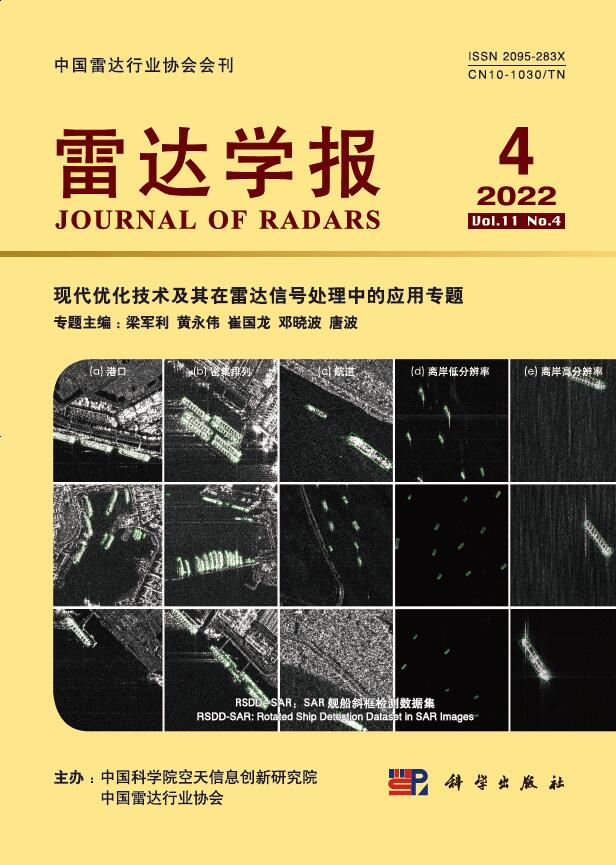

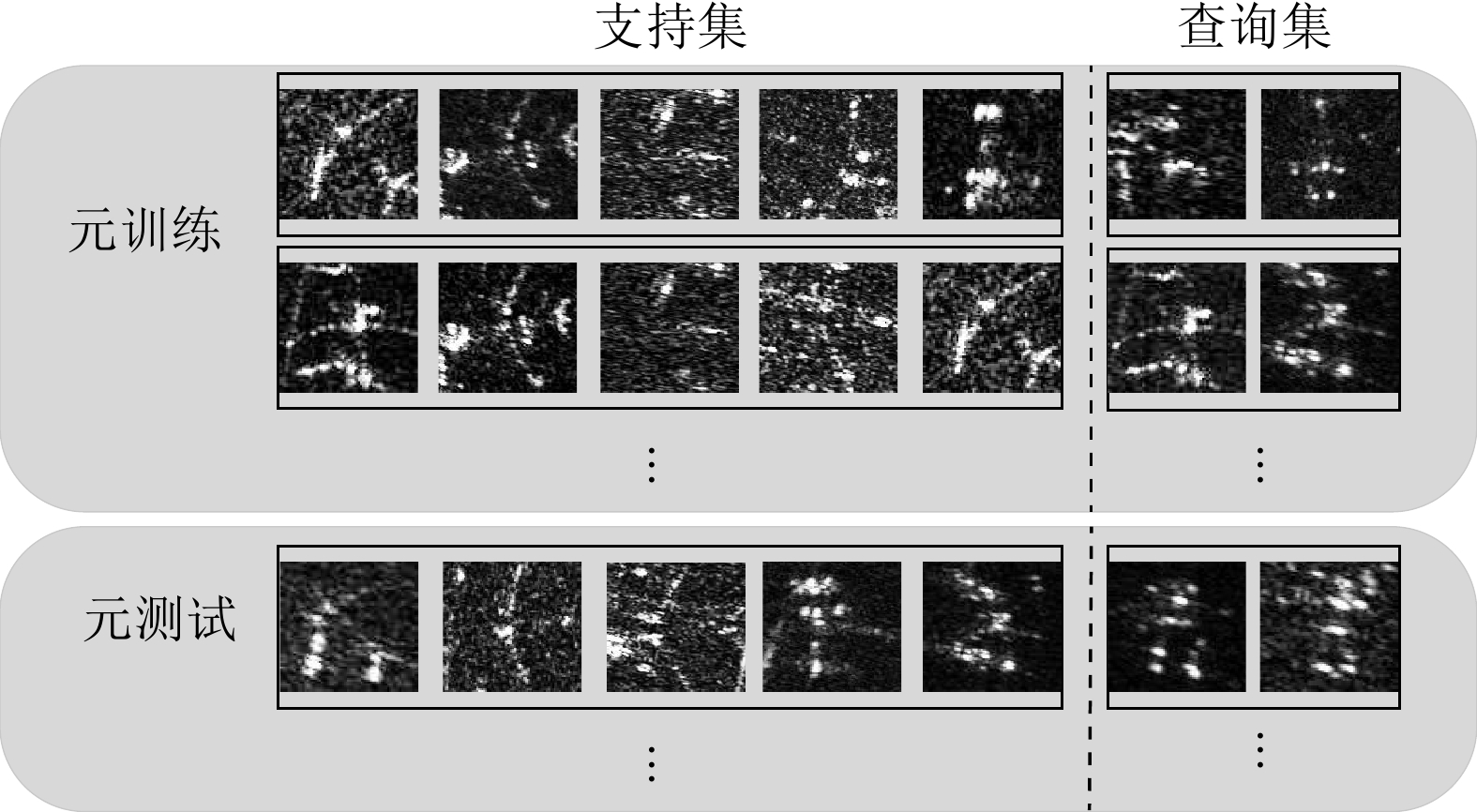



 DownLoad:
DownLoad:
